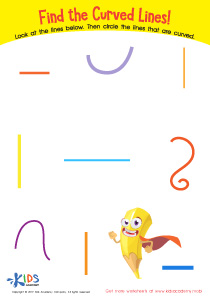Letter-sound correlation Alphabet Worksheets for Ages 3-9
7 filtered results
-
From - To
Introducing our engaging Letter-Sound Correlation Alphabet Worksheets, tailored for ages 3-9! These expertly designed sheets are crafted to nurture early reading skills by connecting letters with their corresponding sounds. Perfect for young learners, our worksheets make phonics fun and interactive. Kids will explore each letter through vibrant visuals and simple exercises, aiding in effective sound recognition and pronunciation. Ideal for home or classroom use, these printables align with educational standards to support literacy development. Make learning dynamic and enjoyable—help your child master the essentials of letter-sound relationships today with Kids Academy's top-quality resources!


Beginning Sounds Assessment Printable


Letter A Sounds Worksheet


Letter Sounds: J Printable Worksheet


Letter U Sounds Worksheet


Letter T Sounds Worksheet


The SH Digraph Worksheet


Matching Consonant Sounds: Part 1 Worksheet
Understanding the letter-sound correlation, also known as phonics, is crucial for children aged 3-9 as it serves as the foundation for effective reading and writing skills. During these formative years, the ability to connect letters with their corresponding sounds helps children decode words, enabling them to read fluently. This skill not only promotes better comprehension but also builds confidence, making the learning process enjoyable and engaging.
Parents and teachers play an essential role in cultivating this foundational knowledge. Consistent exposure to phonics can aid in the early detection of any learning difficulties, allowing for timely intervention and support. Phonics instruction also enhances spelling abilities, as children learn the systematic relationships between sounds and letters, making it easier to spell words correctly.
Furthermore, a strong grasp of letter-sound correlations accelerates vocabulary development and strengthens cognitive skills such as memory, attention, and auditory processing. Activities like singing alphabet songs, playing sound-matching games, and reading aloud together can significantly enrich a child's learning experience.
In summary, investing in phonics education for young children paves the way for academic success and a lifelong love of reading. By prioritizing letter-sound correlation, parents and teachers lay a solid groundwork for future literacy and educational achievements.

 Assign to My Students
Assign to My Students














